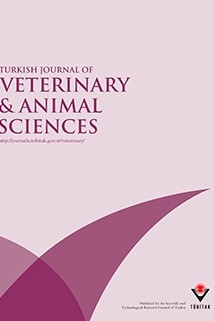
Turkish Journal of Veterinary and Animal Sciences
Yazarlar: Hakan KOCAMIŞ, Nurhayat GÜLMEZ, Şahin ASLAN, Mümtaz NAZLI, Scott A. GAHR
Konular:-
Anahtar Kelimeler:Myostatin,Follistatin,Quail embryos,In ovo rhIGF-1
Özet: Myostatin, along with its binding protein follistatin, have been demonstrated to inhibit skeletal muscle development during embryonic and postnatal development, whereas IGF-1 has been reported to stimulate skeletal muscle development and overall growth. The objectives of the current study were to determine the expression profiles of myostatin and follistatin genes, and to evaluate the impact of in ovo administration of recombinant human insulin-like growth factor-1 (rhIGF-1) on these gene expression patterns during quail embryogenesis, with an emphasis on skeletal muscle development. Quail eggs were injected once with 100 ng rhIGF-1 in 10 mM acetic acid, 0.1% BSA per embryo on day 3 of embryonic development. Total RNA was isolated from whole embryos on each of embryonic days (E) 3 to 6 (n = 6 per day/per treatment), from thoracic/abdominal halves of the embryos on E 7 and E 8 (n = 6 per day/per treatment), and from pectoralis muscle tissues on Es 9 to 16 (n= 4 per day/per treatment). Reverse-transcription polymerase chain reaction (RT-PCR) was used to determine the relative expression pattern. Myostatin mRNA was first detected on E 5, while follistatin mRNA was first detected on E 3. Although myostatin mRNA levels from the control group declined from E 10 to E 12, they increased from E 9 to E16; on E 16 it reached its highest point in the rhIGF-1 injected group. In ovo administration of rhIGF-1 on E 3 appeared to delay myostatin expression approximately 1 day as compared to control embryos at E 9, while it enhanced follistatin expression on E 9. Our results suggest that myostatin and follistatin genes may be pivotal regulators of skeletal muscle growth, and that in ovo administration of rhIGF-1on E 3 may alter the expression profiles of myostatin and follistatin genes, which might enhance the skeletal muscle mass of quail embryos.